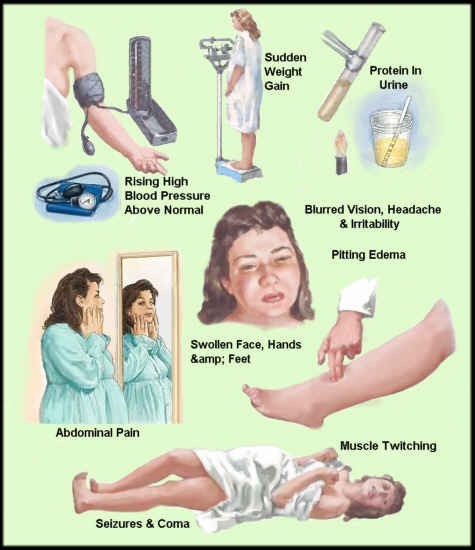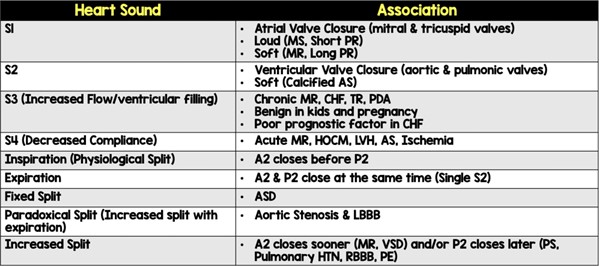During a routine prenatal visit at the antepartal clinic, a multipara at 35 weeks gestation presents with 2+ edema of the ankles and feet. Which additional information should the practical nurse (PN) report to the registered nurse?
Blood pressure.
Due date.
Fundal height.
Gravida and parity.
The Correct Answer is A
Edema, particularly if it is new or worsening, can be an indicator of preeclampsia, a potentially serious condition characterized by high blood pressure and organ dysfunction. Monitoring the client's blood pressure is crucial in assessing for signs of preeclampsia and determining the appropriate course of action.

B. Due date: The due date is an important piece of information for monitoring the progress of the pregnancy, but it is not directly relevant to the client's presenting symptom of edema. The focus should be on assessing for potential complications associated with edema, such as preeclampsia.
C. Fundal height: Fundal height is a measurement used to estimate fetal growth and position. While it is an important parameter to monitor during prenatal visits, it is not directly related to the client's edema. The priority in this situation is to assess for signs of preeclampsia or other complications, which may require assessing the blood pressure.
D. Gravida and parity: Gravida refers to the total number of pregnancies a woman has had, while parity refers to the number of pregnancies that have reached viability (20 weeks or more). While these pieces of information provide a background understanding of the client's obstetric history, they do not provide immediate insight into the current issue of edema. Assessing the blood pressure would be more relevant in this situation to identify any potential complications.
Nursing Test Bank
Naxlex Comprehensive Predictor Exams
Related Questions
Correct Answer is D
Explanation
In cases of suspected child abuse, inconsistencies or discrepancies between the child's account of the injury and the caregiver's version are concerning. It raises questions about the credibility of the explanation provided by the caregiver and suggests a possible attempt to conceal the true cause of the injury. Such discrepancies may indicate that the injury was intentionally inflicted or that the child is being coerced or influenced to provide a false account.
While the other assessment findings may raise some level of concern, they are not as significant as the discrepancy between the child's and mother's versions of the injury:
A. "The mother refuses to answer questions about family history." While this behavior may raise some suspicion or cause for further investigation, it alone does not conclusively indicate child abuse. It may be related to other factors such as privacy concerns or cultural differences.
B. "The child has several abrasions on the chest and legs." While the presence of abrasions can be concerning, they alone do not provide sufficient evidence of child abuse. Children are prone to injuries and can obtain abrasions during normal play and activities.
C. "The child looks at the floor when answering the nurse's questions." This behavior may suggest shyness, anxiety, or discomfort, but it is not a definitive indicator of child abuse. Some children may exhibit such behaviors due to their personality or other factors unrelated to abuse. It is important to consider the child's overall behavior and communication patterns in conjunction with other assessment findings.
Correct Answer is ["A","D"]
Explanation
S3 is an extra heart sound that occurs during diastole (the filling phase of the cardiac cycle). It is commonly associated with conditions such as heart failure and volume overload. S3 is often described as a low-frequency, dull, and distant sound heard after S2 (the second heart sound).
B, C- S1, and S2 are the normal heart sounds that are typically heard in all individuals. S1 is the first heart sound, heard as "lub," and is caused by the closure of the mitral and tricuspid valves. S2 is the second heart sound, heard as "dub," and is caused by the closure of the aortic and pulmonic valves. These sounds are normal and expected.
S4 is another abnormal heart sound, which occurs during late diastole and is associated with conditions such as ventricular hypertrophy and reduced ventricular compliance.

Whether you are a student looking to ace your exams or a practicing nurse seeking to enhance your expertise , our nursing education contents will empower you with the confidence and competence to make a difference in the lives of patients and become a respected leader in the healthcare field.
Visit Naxlex, invest in your future and unlock endless possibilities with our unparalleled nursing education contents today
Report Wrong Answer on the Current Question
Do you disagree with the answer? If yes, what is your expected answer? Explain.
Kindly be descriptive with the issue you are facing.
